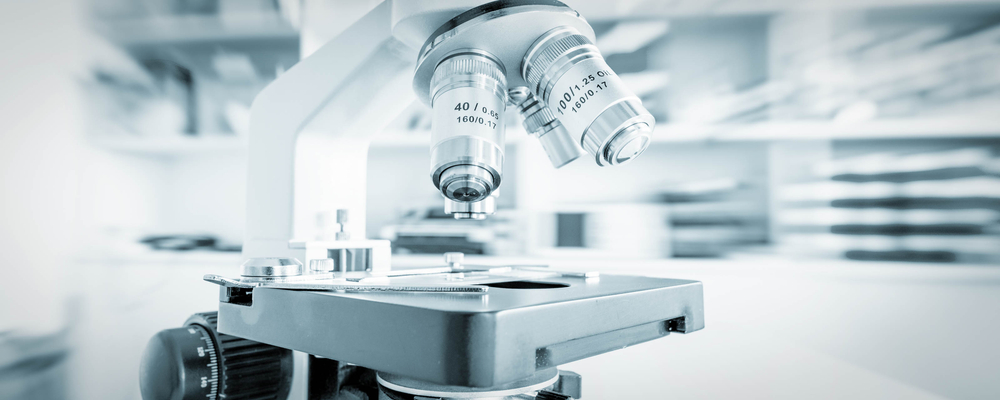
Setting up a bench laboratory is a multifaceted endeavor that demands meticulous planning, thoughtful consideration of various elements, and a commitment to safety, efficiency, and scientific excellence. Whether the laboratory is intended for cutting-edge research, educational pursuits, or specialized testing, the process requires a comprehensive understanding of the unique needs and goals of the facility.
This ultimate guide aims to provide a comprehensive roadmap for the establishment of a fully equipped and well-organized bench laboratory. From defining the laboratory’s purpose to considerations for safety, equipment selection, and compliance with regulations, each aspect is addressed to guide researchers, educators, and professionals in creating a space that meets operational needs and fosters a culture of collaboration and innovation.
What is a Bench Laboratory?

The term “bench laboratory” typically refers to a laboratory setting where scientific experiments, research, or testing is conducted on a workbench or laboratory bench. In this context, a bench is a flat, elevated surface equipped with tools, instruments, and equipment for various scientific or analytical purposes.
Bench laboratories are commonly found in scientific disciplines such as chemistry, biology, physics, and engineering. Researchers or scientists perform experiments, analyze samples, and conduct various tests on the bench to gather data and obtain results. These laboratories are essential for carrying out hands-on experiments and investigations in a controlled environment.
The following steps are essential in setting up any type of lab.
1. Define the Purpose and Goal of the Bench Lab
The purpose and goal of setting up a bench laboratory is a foundational step in establishing the laboratory’s identity and direction. The purpose reflects the primary reason for its existence, whether it be scientific research, educational initiatives, or testing applications. Likewise, the goal outlines the specific objectives and outcomes the laboratory aims to achieve.
A clear definition of purpose and goal provides the guiding principles for laboratory design, equipment selection, and workflow organization. This clarity serves as a roadmap for making informed decisions throughout the laboratory’s establishment and operation, ensuring that resources are allocated efficiently, and the laboratory fulfills its intended role effectively.
2. Create a Detailed Floor Plan

Developing a comprehensive floor plan for a bench laboratory involves a meticulous approach to ensure seamless workflow and optimal efficiency. Careful consideration must be given to the placement of workbenches, storage areas, and equipment to facilitate a logical and organized layout.
- Workbenches should be strategically positioned to allow for ample space around them, fostering easy movement and collaboration among researchers.
- Storage areas, such as cabinets and shelving, should be conveniently located to provide quick access to tools and supplies while maintaining a clutter-free environment.
- Equipment placement should be thoughtfully integrated into the workflow, minimizing unnecessary movement and streamlining experimental processes.
- Collaborating with experienced lab designers and considering future scalability can also contribute to an efficient and effective bench lab setup.
A bench laboratory design that prioritizes accessibility and workflow efficiency enhances productivity and contributes to a safe and organized laboratory environment, allowing researchers to focus on their work without hindrance.
3. Ensure Adequate Lab Space
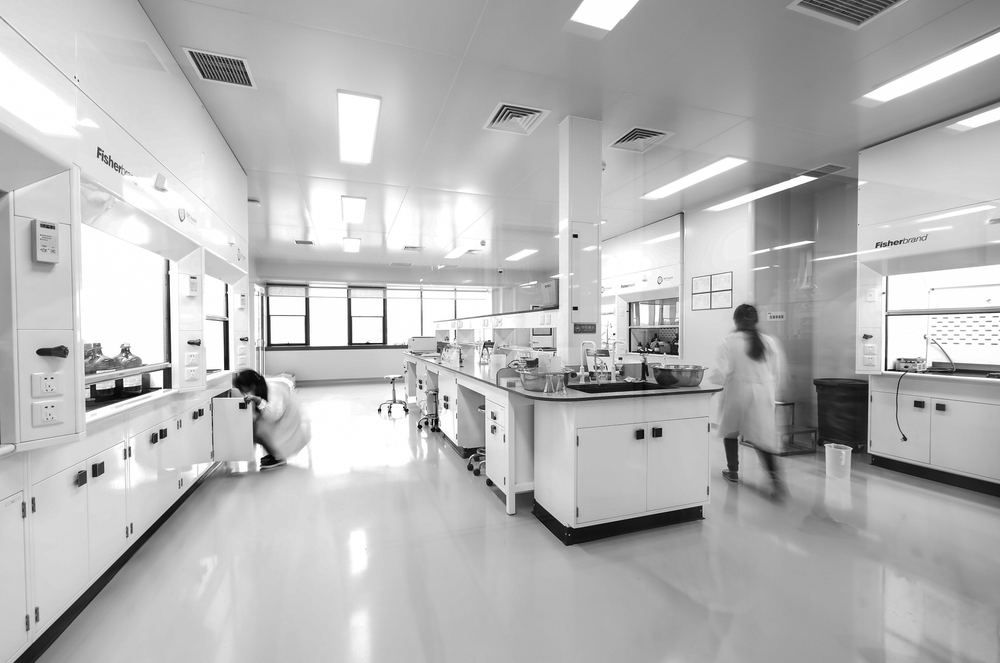
Providing sufficient space in a bench laboratory is of paramount importance as it directly influences the functionality, safety, and overall efficiency of the workspace.
- A well-designed, spacious laboratory layout allows researchers to conduct experiments, handle equipment, and move freely without congestion or limitations.
- Ample space minimizes the risk of accidents, promotes ergonomic workstations, and facilitates a more organized and accessible environment.
- Researchers can navigate the laboratory with ease, reducing the likelihood of spills, collisions, or cross-contamination.
- Adequate space enables the installation of essential safety features, such as emergency exits, eyewash stations, and fire extinguishers, ensuring a secure working environment.
- In addition to safety considerations, sufficient space accommodates the placement of specialized equipment and allows for future expansions or modifications, enhancing the laboratory’s adaptability to evolving research needs.
Overall, prioritizing spatial considerations contributes to a well-functioning, safe, and adaptable bench laboratory.
Additional Reading: Maximizing Space: The Best Lab Cupboards for Compact Areas
4. Bench Laboratory Safety
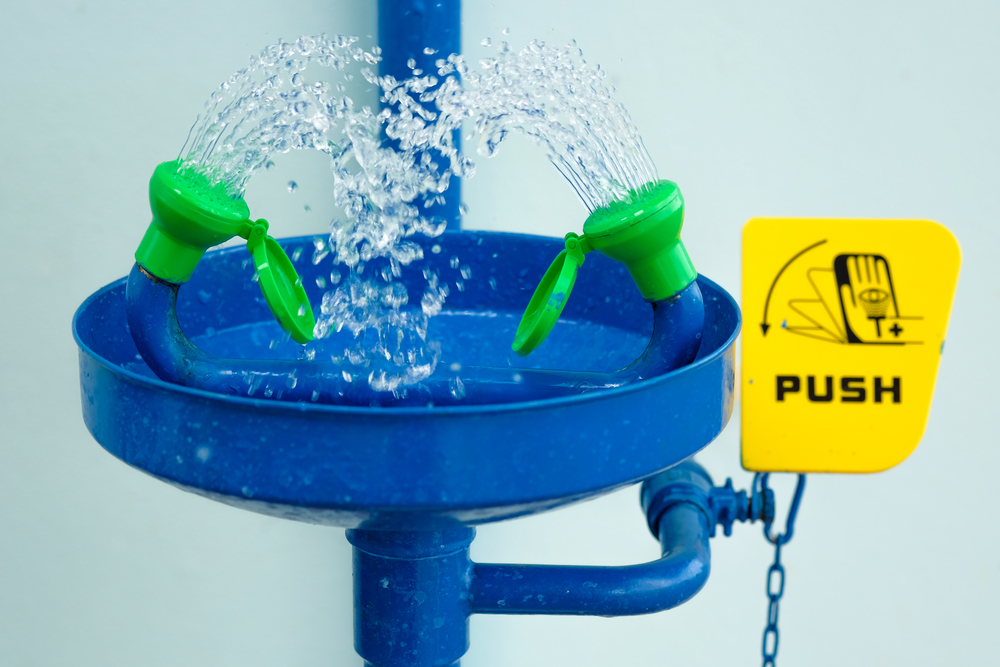
Safety is a paramount consideration in the planning of a bench laboratory, encompassing various measures to protect personnel, the environment, and the integrity of experiments, which often involve lab work using hazardous materials.
- Emergency planning is essential, involving the installation of emergency exits, eyewash stations, and fire extinguishers strategically placed throughout the laboratory.
- Proper ventilation is crucial to maintain air quality and mitigate exposure to hazardous fumes, with the incorporation of fume hoods providing a controlled environment for handling volatile substances.
- Personal Protective Equipment (PPE) is a cornerstone of laboratory safety, including items such as gloves, safety goggles, lab coats, and respiratory protection as necessary.
- These safety measures not only adhere to regulatory standards but also safeguard the well-being of researchers and the integrity of experimental outcomes.
Rigorous safety protocols, ongoing training, and the establishment of a safety-conscious culture contribute to a secure and compliant bench laboratory, ensuring that scientific endeavors can be conducted responsibly and without compromise.
5. Select Appropriate Bench Materials
Choosing appropriate bench materials for a laboratory is crucial to ensure durability, safety, and functionality.
- Bench materials should be resistant to corrosion and to chemicals commonly used in experiments, easy to clean, and able to withstand wear and tear.
- Common choices include chemical-resistant laminate, phenolic resin, epoxy resin, or stainless steel for work surfaces, depending on the specific laboratory requirements.
- These benchtop materials provide a smooth, non-porous surface that facilitates easy cleaning and minimizes the risk of contamination.
- Additionally, considering factors like electrostatic discharge resistance is essential for laboratories dealing with sensitive electronic equipment.
The selection of lab bench materials should align with the nature of the experiments conducted in the laboratory, creating a reliable and long-lasting foundation for scientific work while prioritizing the safety and well-being of laboratory personnel.
Additional Reading: The Benefits of Metal Benches in a Laboratory Setting
6. Equip Your Bench Laboratory
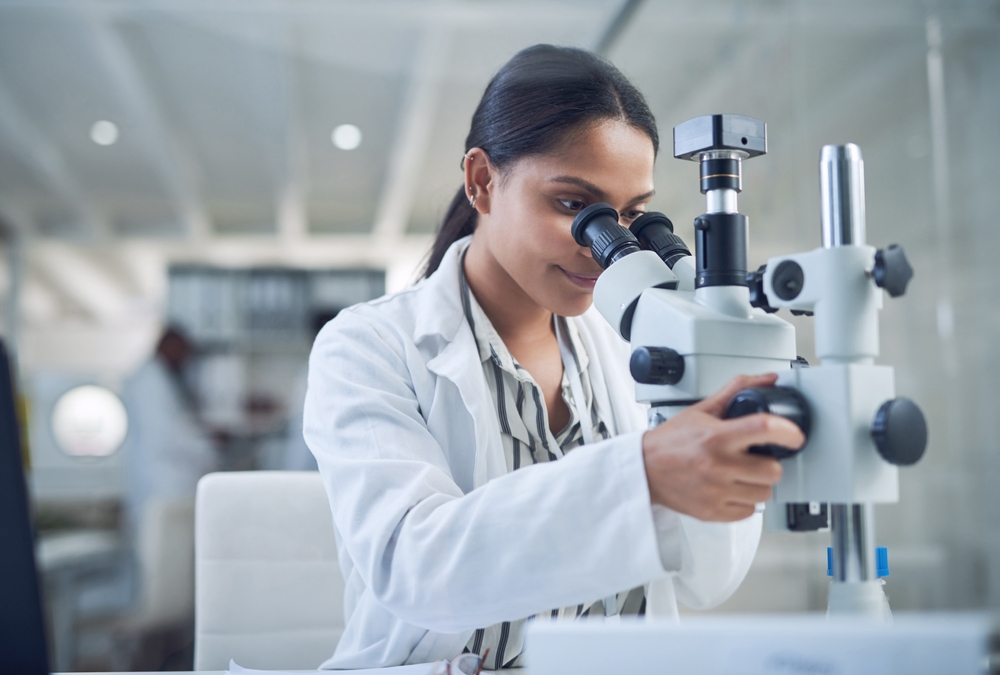
Equipping a bench laboratory involves thoughtful consideration of both essential and specialized, high-quality lab equipment and casework to support various experiments and research activities.
- Essential equipment includes items such as microscopes, centrifuges, pipettes, analytical balances, and incubators, catering to common laboratory tasks.
- Specialized equipment, like fume hoods and laminar flow cabinets, is crucial for handling hazardous substances and maintaining a controlled environment.
- Fume hoods provide ventilation and containment for experiments involving noxious fumes, ensuring the safety of laboratory personnel. Note that the employer is responsible for ensuring that the fume hood meets satisfactory safety standards. A hood operator is responsible for ensuring that the hood is used safely and according to prescribed safety guidelines.
- Laminar flow cabinets create a clean workspace by directing a controlled airflow, preventing contamination in sensitive experiments, especially in microbiological or cell culture work.
The selection of equipment should align with the specific needs of the laboratory, considering the nature of experiments, safety requirements, and the precision demanded by the research protocols. Additionally, regular maintenance and calibration of equipment are essential to ensure accurate and reliable results over time.
When setting up a bench laboratory, it is a good practice to request screening of work surface and sink products depending on the users’ needs. Users are advised to seek test results from suppliers that meet their requirements, as well as evaluate the validity and dependability of the test approach and data. This should include whether the data is merely representative or certified, and what warranty is provided by the supplier.
Additional Reading: Wet Laboratory Construction: Planning and Design Considerations
7. Install Utilities in Your Bench Laboratory
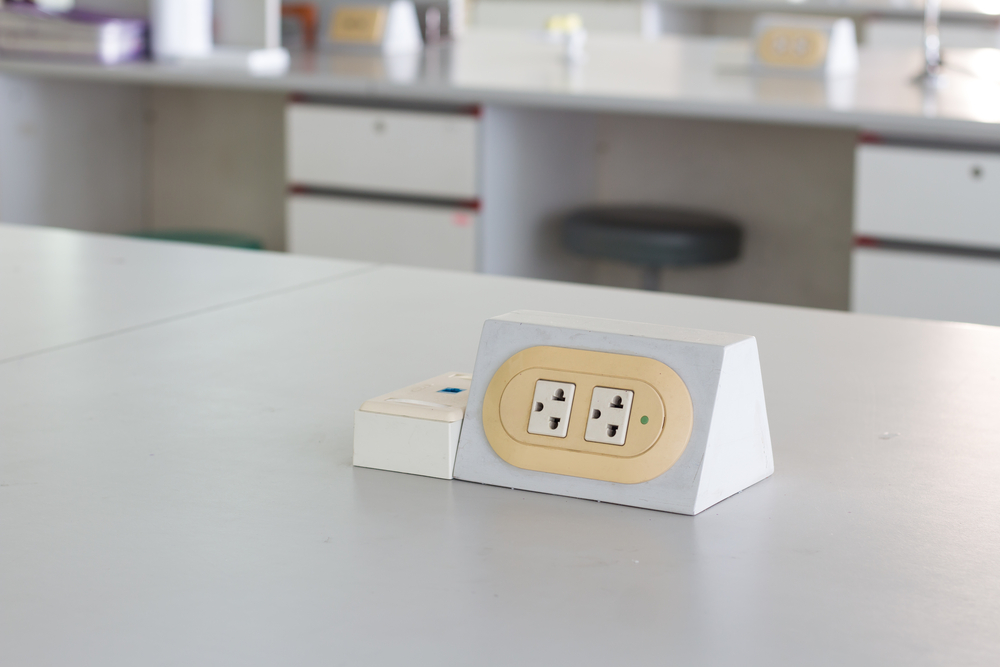
The installation of utilities is a critical aspect when setting up a bench laboratory, as it directly impacts the functionality and efficiency of the workspace.
- Properly planned utilities include access to power outlets for various laboratory equipment, gas lines for experiments requiring gas sources, water lines for experiments or equipment requiring water, and vacuum lines for filtration and aspiration processes.
- These utilities are the lifeblood of the laboratory, supporting a wide range of experiments and ensuring the smooth operation of essential equipment.
- Adequate provision for utilities not only caters to current research needs but also allows for flexibility and adaptability as experimental requirements evolve.
- Emergency power sources, such as generators, should also be considered to maintain continuity during power outages.
Thoughtful planning and installation of utilities contribute to a well-equipped and versatile bench laboratory, providing the necessary infrastructure for diverse scientific endeavors.
8. Establish Bench Laboratory Storage Options
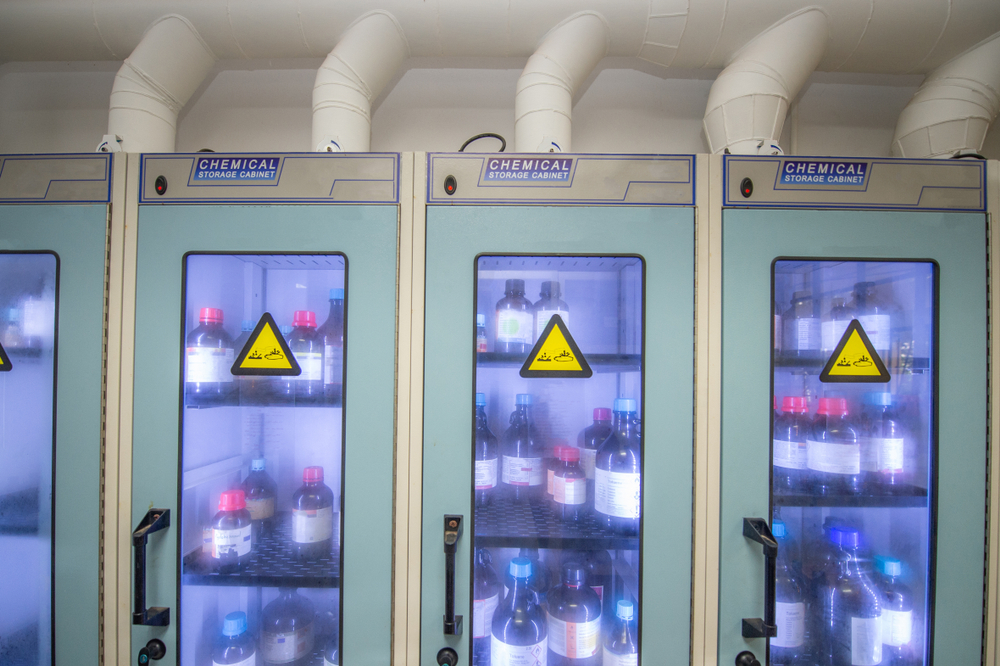
Establishing designated storage space is a crucial element in the setup of a bench laboratory, contributing significantly to organization, efficiency, and safety. Laboratories deal with various chemicals, reagents, glassware, and equipment, all of which require specific storage conditions.
- Designated storage areas, including chemical storage cabinets, sample refrigerators, and glassware racks, help ensure that items are stored appropriately, reducing the risk of contamination and facilitating easy access for researchers.
- Proper labeling and inventory management systems should be implemented to track supplies and prevent errors.
- Well-organized storage enhances workflow and promotes safety by minimizing the potential for accidents related to mishandling or misplacement of materials.
This strategic approach to storage contributes to a tidy and functional laboratory environment, fostering a conducive space for focused scientific work.
9. Implement Ergonomic Design
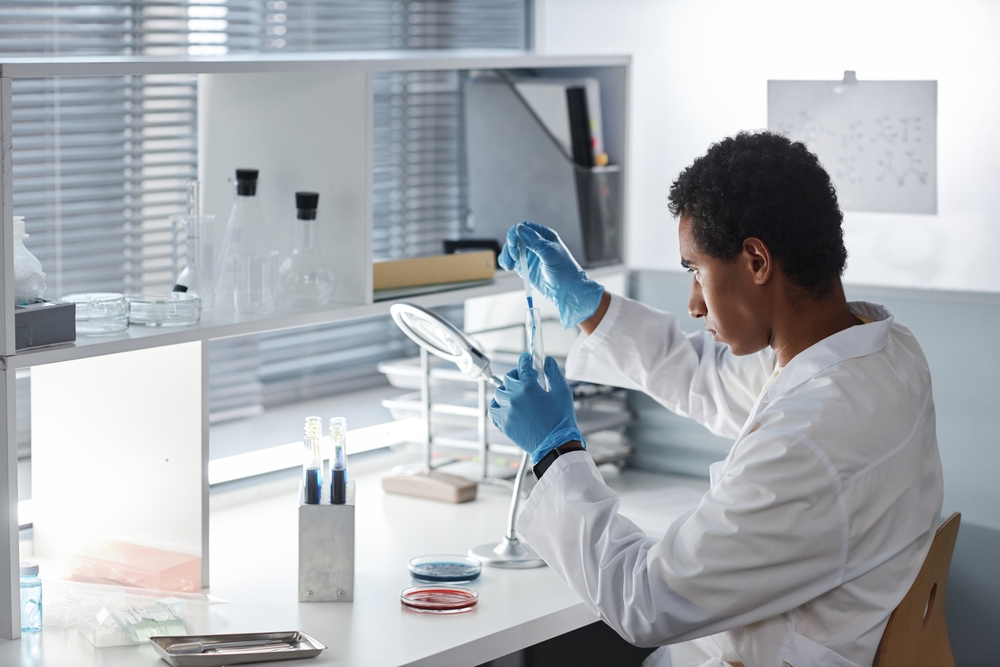
Considerations for the ergonomic design of a bench laboratory are paramount to ensure the well-being and productivity of laboratory personnel.
- Ergonomics in the laboratory involves optimizing the design of workstations, equipment, and lab furniture to reduce physical strain, fatigue, and the risk of injuries among researchers.
- This includes providing chairs with adjustable heights, proper lighting, and anti-fatigue mats in areas where personnel stand for extended periods doing laboratory work.
- Workbenches should be designed at an appropriate height to accommodate various tasks, and tools should be organized within easy reach.
- Additionally, ergonomic considerations extend to the arrangement of computer workstations for data analysis, ensuring that screens, keyboards, and chairs are adjustable to accommodate individual preferences and reduce the risk of musculoskeletal issues.
- Furthermore, accessibility to accommodate the needs of all, including those with disabilities or special requirements. Consider wheelchair accessibility, adjustable tables, and equipment that can be easily reached by all personnel. Incorporate universal design principles to create a space that is accessible and welcoming to everyone.
By prioritizing ergonomic design, a bench laboratory can create a comfortable and safe environment, enhancing the overall efficiency and well-being of its personnel. Regular training on proper ergonomic practices further supports a culture of health and safety within the lab environment.
10. Create a Collaborative Environment

Creating collaborative spaces is a key consideration when setting up a bench laboratory, fostering a culture of teamwork and knowledge exchange among researchers.
- These spaces can include designated meeting areas equipped with whiteboards, projectors, and comfortable seating, encouraging open communication and collaboration on research projects.
- By providing shared spaces for discussions and brainstorming sessions, a bench laboratory can enhance interdisciplinary collaboration, fostering a dynamic and innovative research environment.
- Collaborative spaces also promote the exchange of ideas, potentially leading to novel approaches and solutions to scientific challenges.
Such an environment encourages researchers to share expertise, collaborate on experiments, and collectively contribute to the advancement of scientific knowledge within the laboratory setting.
11. Organize Bench Laboratory Data Management

Setting up effective data management is a crucial aspect of organizing and optimizing a bench laboratory’s workflow.
- A well-established data management system includes creating a dedicated computer workstation equipped for data analysis, data storage solutions, and robust backup protocols.
- Researchers should have access to reliable software for data processing and analysis, and data storage systems should be secure and easily accessible.
- Implementing a clear and standardized naming convention for files, along with a structured folder hierarchy, enhances data organization.
- Regular data backups, both onsite and offsite, are essential to safeguard against potential loss. Establishing user permissions and access controls helps maintain data security and integrity.
The implementation of a comprehensive data management strategy ensures that research data is effectively captured, stored, and retrievable, fostering transparency, reproducibility, and the overall success of scientific endeavors within the bench laboratory.
12. Establish a Cleaning and Maintenance Routine
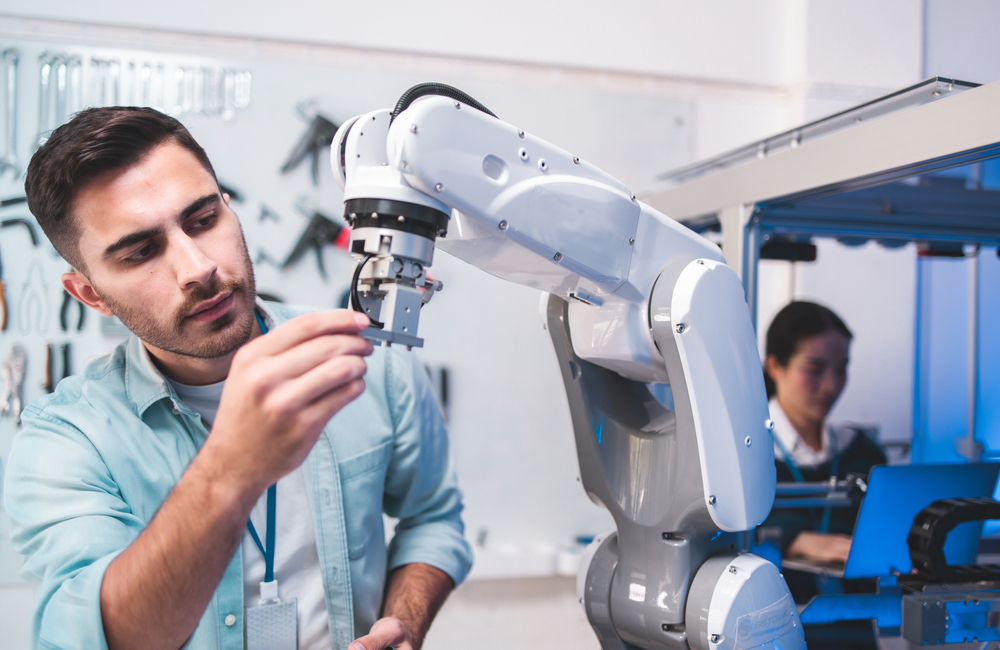
Establishing a dedicated zone for cleaning and maintenance is crucial when setting up a bench laboratory, contributing to the overall efficiency and longevity of equipment and workspaces.
- This designated area should be well-equipped with essential cleaning supplies and tools for routine maintenance tasks.
- Additionally, the installation of utilities, such as water and power sources, is essential in this zone to support cleaning activities effectively.
- Regular maintenance is key to ensuring the proper functioning of critical instruments and equipment, and preventive measures can significantly extend their lifespan.
- This includes scheduling routine inspections and calibrations and implementing a preventive maintenance program for instruments like microscopes, centrifuges, and analytical balances.
By integrating a cleaning and maintenance zone, along with utilities and preventive maintenance protocols, the bench laboratory ensures a proactive approach to equipment care, reducing downtime, preventing costly repairs, and maintaining a high standard of accuracy and reliability in scientific experiments.
13. Bench Laboratory Training Protocols
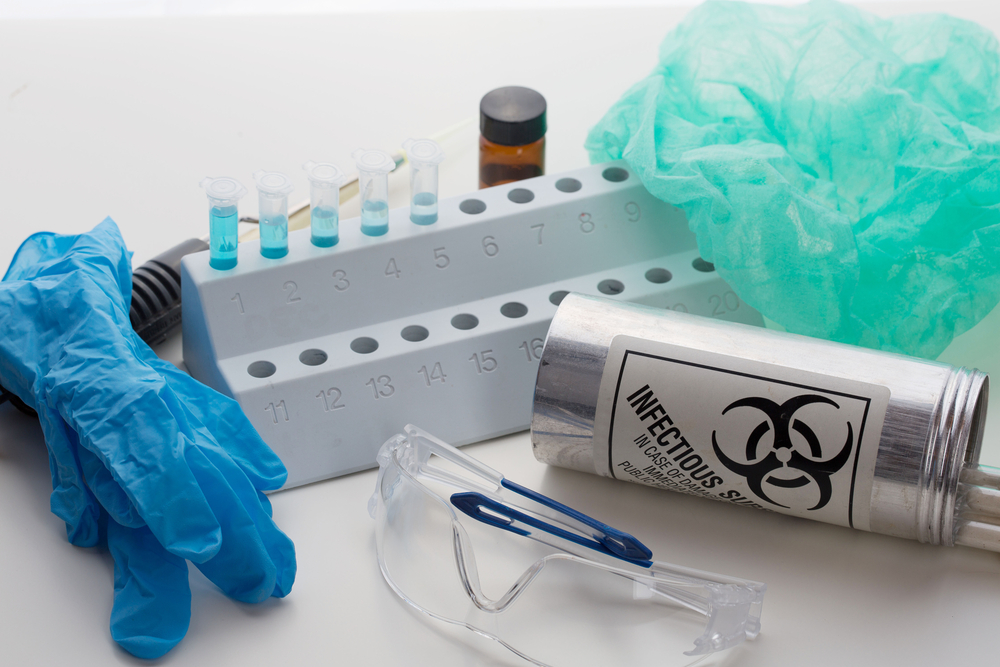
Providing comprehensive training sessions for laboratory personnel is essential to ensure a safe and efficient working environment.
- These sessions cover essential aspects such as equipment usage, and imparting the necessary skills for operating laboratory instruments effectively and safely.
- Training also includes detailed instruction on adherence to safety protocols, emphasizing the proper handling of chemicals, wearing appropriate Personal Protective Equipment (PPE), and maintaining a clean and organized workspace.
- Emergency procedures are a critical component of training, ensuring that personnel are well-prepared to respond effectively in case of accidents or unforeseen events.
By prioritizing ongoing education and training, the bench laboratory fosters a culture of awareness, responsibility, and competence among its personnel, creating an environment conducive to successful scientific research while prioritizing the health and safety of everyone in the laboratory.
14. Compliance with Regulations

Maintaining compliance with regulations is paramount when setting up a bench laboratory, as it ensures the adherence to legal and safety standards that govern laboratory practices.
- These include the guidelines of The Hazard Communication Standard (HCS) of OSHA and NFPA 45: Standard on Fire Protection for Laboratories Using Chemicals.
- Compliance encompasses various aspects, including environmental, health, and safety regulations, as well as institutional and industry-specific guidelines.
- Adhering to these regulations safeguards the well-being of laboratory personnel and protects the environment and the broader community.
- Compliance also contributes to the reliability and credibility of research outcomes, as it ensures that experiments are conducted ethically and transparently.
- Regular updates on regulatory requirements, ongoing training, and periodic audits are essential components of a robust compliance framework.
By prioritizing adherence to regulations, a bench laboratory avoids legal consequences and establishes a foundation for responsible and ethical scientific practices.
Conclusion
In conclusion, the successful setup of a bench laboratory is a harmonious integration of thoughtful planning, adherence to safety protocols, and a commitment to creating an environment conducive to scientific exploration. This guide has explored the intricacies of establishing a laboratory, from defining its purpose and creating efficient workflows to selecting the right equipment, implementing safety measures, and ensuring regulatory compliance.
By embracing the principles outlined in this guide, laboratories can be designed to facilitate groundbreaking research, support educational initiatives, or fulfill industry testing needs. As laboratories evolve to meet the challenges of advancing scientific frontiers, the importance of a well-organized, safe, and collaborative space cannot be overstated.




